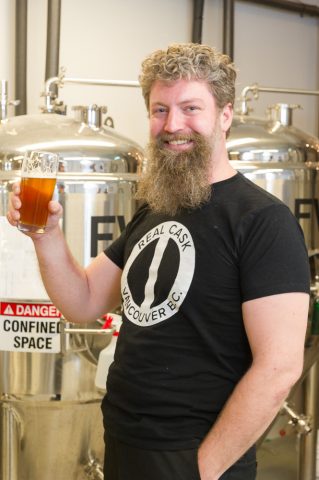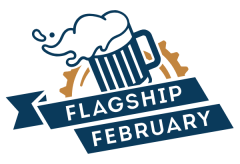Are Core Brands A Thing Of The Past?
This past February, beer journalist Stephen Beaumont launched #FlagshipFebruary, a social media campaign encouraging beer drinkers to consider drinking brewery core brands over ‘seasonal’ offerings. “Just because a beer is new or unusual doesn’t mean that it’s good,” he tweeted. The many breweries that retweeted their support appeared to be chiding their clientele for drinking the very brews they themselves have been bringing to market with dizzying frequency.
February is a notoriously quiet month for beer sales. As “Dry January” rolls over into the year’s shortest month, many breweries struggle with cashflow, so advertising campaigns designed to get you back into bars and liquor stores are nothing new. Neither are the tasteless Super Bowl ads for tasteless macro lager. Case in point: this year’s AB InBev corn syrup controversy, or their 2015 “Pumpkin Peach Ale” campaign which inexplicably attacked their own recently-acquired Elysian Brewing. To me, Beaumont’s campaign seemed similarly tone-deaf.
Back when the craft explosion was just beginning, it seemed that every new brewery followed the same strategy: launch with a basic lineup of solid but uninspired classics like a pale ale, an IPA, a lager (or maybe a Kölsch to save time) plus a seasonal like a stout or porter. It was a proven method for the time, but in a rapidly maturing market that constantly seeks new tastes and sensations, we seem to have outgrown this model.
In the Craft Beer Business Fundamentals course I teach at SFU, I explain why the core brand model exists, and why it’s rapidly becoming obsolete. The main reason for it is contracts, since bars, liquor stores (especially government stores) and restaurants typically don’t change their tap lineup very often. It’s disruptive and expensive to curate new lists, blow out old stock, reprint menus, train servers and so forth just for a new beer. Also, many regular customers like their regular beer.
Invariably I’m left a little cold by core brands. Although they may be technically proficient and have broad appeal, they tend to be less imaginative. This committee thinking is what landed us with light lagers if it’s bland enough, it won’t offend anyone. This stands in direct contrast to the constant innovation and new flavours that have made BC a world-class craft hub.
If you’re a brewery visitor like me, there’s not much draw to try a beer that you’ve had a dozen times already unless it’s genuinely exceptional. Even when I do plump for a classic, I’m often left disappointed. Have you ever thought “not as good as it was”?
Personally, I’m always fascinated to try something new and limited. Indeed, this was part of the approach when I was at Callister Brewing: new beers all the time. Oddly, the sole exception was my Blackburn Bitter — our only “core” brand.

Some vocal brewers claim, as did Dageraad Brewing’s Ben Coli in a recent article in The Growler, that core beers are usually their best work. Coli wrote, “The best beers are the ones that the brewers are working on constantly, the ones that are designed with balance and drinkability in mind.” While I think that “best” is subjective, I agree that constantly refining a recipe can help it to improve. However, it can also have a negative effect, taking it away from the classic we all fell in love with. There’s a long history of brewery owners looking to save a few bucks by cutting corners with core recipes.
Coli continues, “At the end of a long day of work, those thirsty brewers aren’t reaching for a glass of marjoram-kopi-luwak-jelly-doughnut kolsch, they’re reaching for their brewery’s trusty pale ale.” This is often true, although the desires of the brewer are not necessarily the desires of the drinking classes.
With close to 180 breweries in BC and a conservative estimate of four core brands per (some have none, some have over a dozen) that’s about 720 core beers in the province. All too often this core still comprises a lager, a pale ale and an IPA, which then proliferate in government liquor stores.
I think we all have some “core” beers that are a happy go-to. For me they include Strange Fellows’ Talisman, Driftwood’s Fat Tug, and my favourite, Parallel 49’s Old Boy (although I’ve been enjoying their Oak Boy variation lately). I hope there will always be a personal loyalty to some cores, but I freely admit that I’m ever eager to try something new and potentially risky. It just seems to me that loyalty to a single beer harkens back to a prehistoric time when beer drinking dinosaurs were defined by their brand: Lucky Lager, Labatt’s Blue and all the rest.
I’m sure #FlagshipFebruary will be back next year, and if you’d like to commemorate it with a core beer, that’s great. Don’t let anyone shame you into skipping a seasonal, though. Every now and again a brewer might catch lightning in a bottle (and maybe win a bunch of awards and add that seasonal to their regular lineup). That’s part of how we’ve grown such a creative craft beer community.

‘ He works at Burnaby Brewing Company? ‘Not sure this is currently true? Ps you spelt Burnley incorrectly.
IMO the problem with the beer scene is that well-made tried & true styles are lacking. Everything has to be novel, trendy & hyper-esoteric. Today’s beer drinker is shallow & obssessed with what’s the latest “cool” thing !